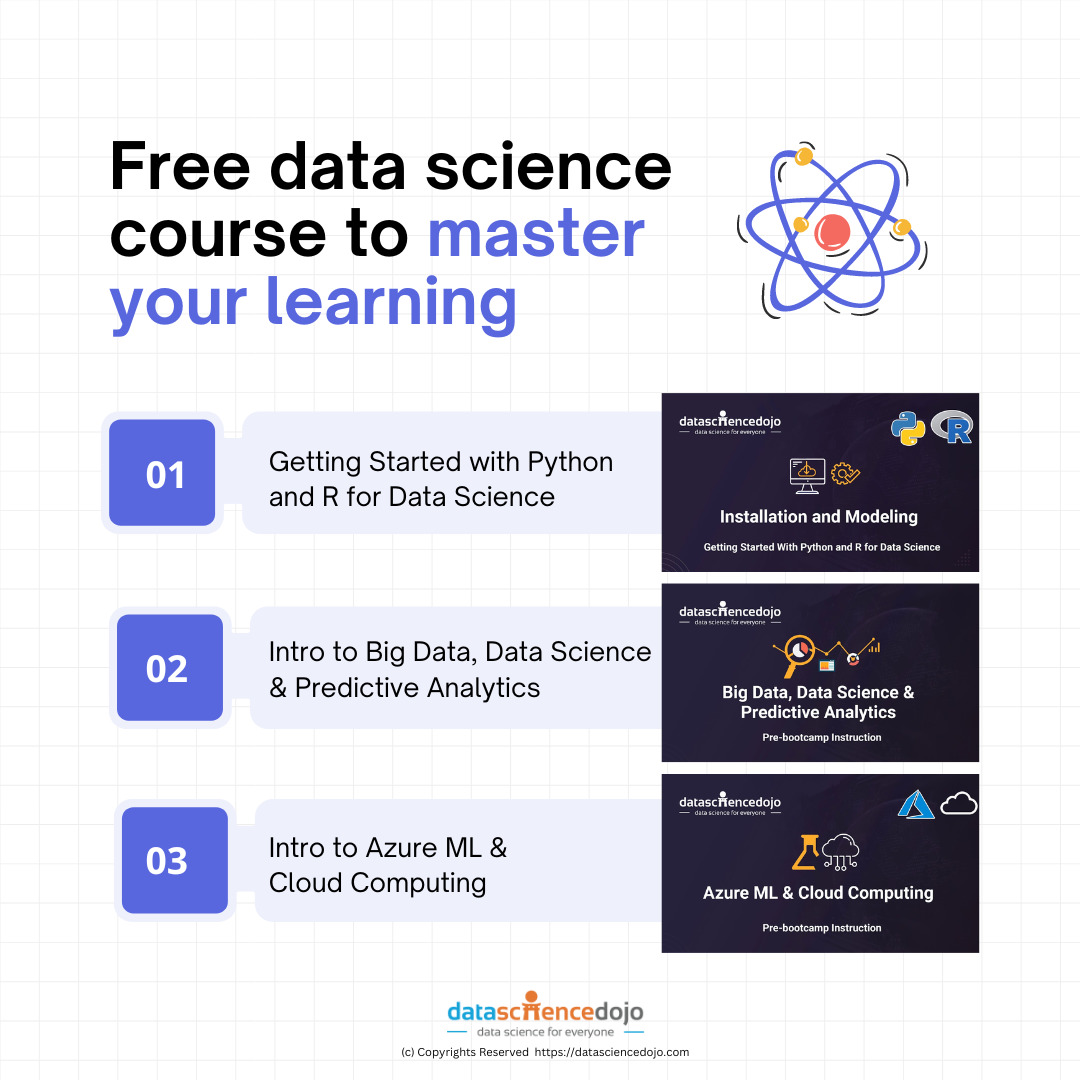In this blog, we will discuss how companies apply data science in business and use combinations of multiple disciplines such as statistics, data analysis, and machine learning to analyze data and extract knowledge.
If you are a beginner or a professional seeking to learn more about concepts like Machine Learning, Deep Learning, and Neural Networks, the overview of these videos will help you develop your basic understanding of Data Science.

Overview of the Free Data Science Course for Beginners
If you are an aspiring data scientist, it is essential for you to understand the business problem first. It allows you to set the right direction for your data science project to achieve business goals.
As you are assigned a data science project, you must assure yourself to gather relevant information around the scope of the project. For that you must perform three steps:
- Ask relevant questions from the client
- Understand the objectives of the project
- Defines the problem that needs to be tackled
As you are now aware of the business problem, the next step is to perform data acquisition. Data is gathered from multiple sources such as:
- Web servers
- Logs
- Databases
- APIs
- Online repositories
1. Getting Started with Python and R for Data Science
Python is an open-source, high-level, object-oriented programming language that is widely used for web development and data science. It is a perfect fit for data analysis and machine learning tasks, as it is easy to learn and offers a wide range of tools and features.
Python is a flexible language that can be used for a variety of tasks, including data analysis, programming, and web development. Python is an ideal tool for data scientists who are looking to learn more about data analysis and machine learning.
Python is a great choice for beginners as well as experienced developers who are looking to expand their skill set. Python is an ideal language for data scientists who are looking to learn more about data analysis and machine learning. It is used to accomplish a variety of tasks, including data analysis, programming, and web development.
Python is an ideal tool for data scientists who are looking to learn more about data analysis and machine learning. Python is a great choice for beginners as well as experienced developers who are looking to expand their skill set.
2. Intro to Big Data, Data Science & Predictive Analytics
Big data is a term that has been around for a few years now, and it has become increasingly important for businesses to understand what it is and how it can be used. Big data is basically any data that is too large to be stored on a single computer or server and instead needs to be spread across many different computers and servers in order to be processed and analyzed.
The main benefits of big data are that it allows businesses to gain a greater understanding of their customers and the products they are interested in, which allows them to make better decisions about how to market and sell their products. In addition, big data also allows businesses to take advantage of artificial intelligence (AI) technology, which can allow them to make predictions about the future based on the data they are collecting.
Intro to Big Data, Data Science & Predictive Analytics
The main areas that businesses need to be aware of when they start using big data are security and privacy. Big data can be extremely dangerous if it is not properly protected, as it can allow anyone with access to the data to see the information that is being collected.
In addition, big data can also be extremely dangerous if it is not properly anonymized, as it can allow anyone with access to the data to see the information that is being collected.
One of the best ways to protect your data is by using encryption technology. Encryption allows you to hide your data from anyone who does not have access to it, so you can ensure that no one but you have access to your data. However, encryption does not protect
3. Intro to Azure ML & Cloud Computing
Cloud computing is a growing trend in IT that allows organizations to perform delivery of computing services including servers, storage, databases, networking, software, analytics, and intelligence. Cloud offers a number of benefits, including reduced costs and increased flexibility.
Organizations can take advantage of the power of the cloud to reduce their costs and increase flexibility, while still being able to stay up to date with new technology. In addition, organizations can take advantage of the flexibility offered by the cloud to quickly adopt new technologies and stay competitive.
Intro to Azure ML & Cloud Computing
In this intro to Azure Machine learning & Cloud Computing, we’ll cover some of the key benefits of using Azure and how it can help organizations get started with machine learning and cloud computing. We’ll also cover some of the key tools that are available in Azure to help you get started with your machine learning and cloud computing projects.
Start Your Data Science Journey Today
If you are afraid of spending hundreds of dollars to enroll in a data science course, then direct yourself to the hundreds of free videos available online. Master your Data Science learning and step into the world of advanced technology.
You can also explore our data science bootcamp to kickstart your journey!



